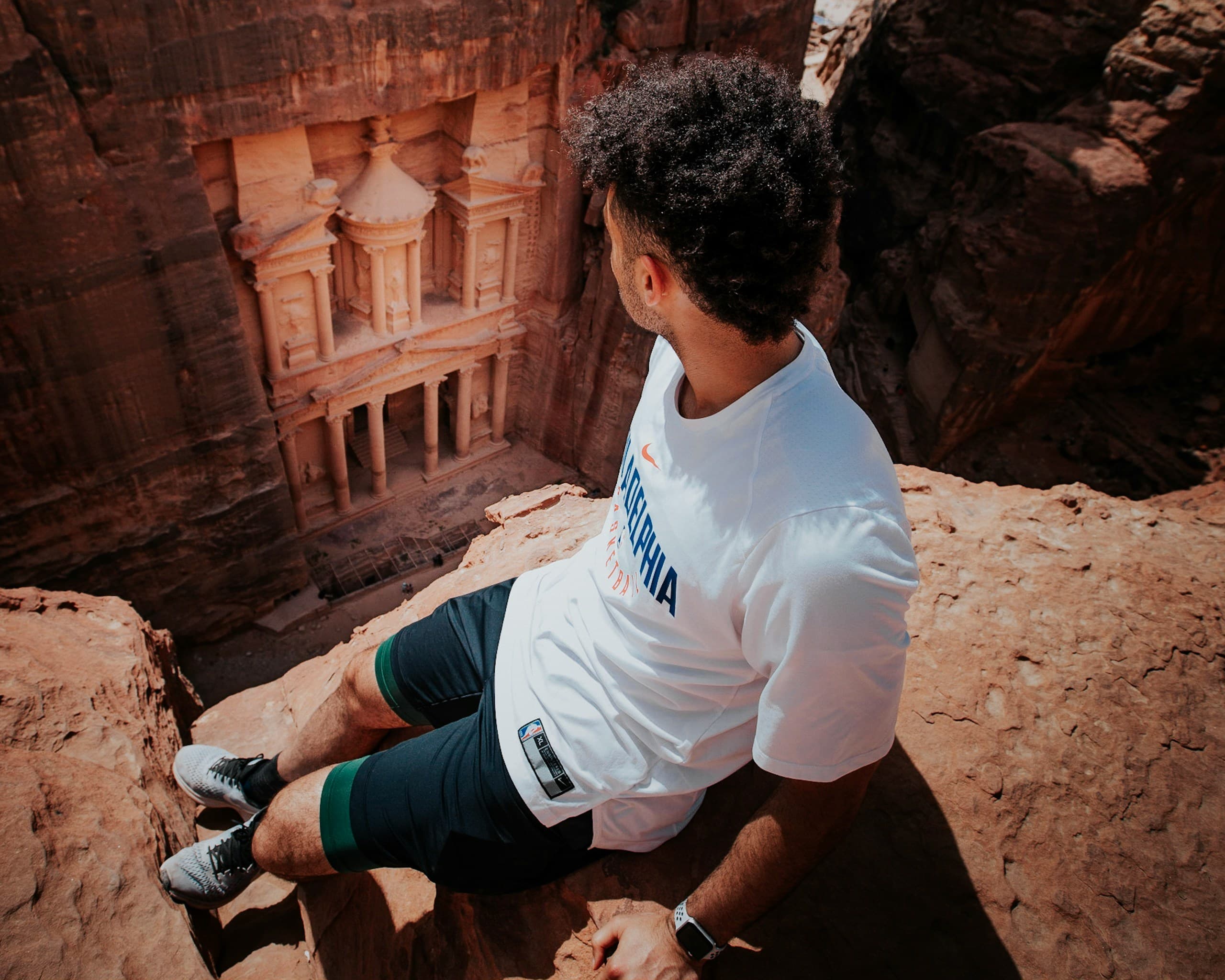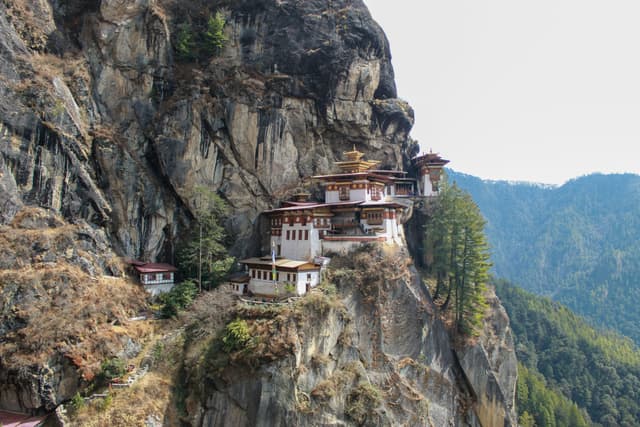There are cities you visit and cities that visit you. Petra — the ancient Nabataean capital hidden in the desert canyons of southern Jordan — is not just a place you see. It's a place that stays with you, etched into your memory like the chiseled sandstone of its facades. Mysterious, majestic, and utterly unique, Petra is one of the few places on Earth that truly lives up to its legendary status.
A City Lost and Found
Petra’s story begins more than 2000 years ago, when the Nabataeans — a nomadic Arab tribe — settled in a remote valley and began to build. But they didn’t just build with stone; they built into it. Entire temples, tombs, and homes were carved directly into the rose-colored cliffs.
For centuries, Petra thrived as a hub of trade, linking Arabia, Egypt, and the Mediterranean. Then, like so many great cities, it faded from memory — a casualty of shifting routes and natural disasters. By the Middle Ages, Petra was a whispered legend, known only to local Bedouins.
It wasn’t until 1812 that Swiss explorer Johann Ludwig Burckhardt, disguised as a Muslim pilgrim, was guided into the lost city by Bedouin tribesmen. What he found stunned the world — and ever since, Petra has captivated the imagination of every traveler who makes the trek.
The Siq: Gateway to Mystery
Your journey into Petra begins not with a dramatic reveal, but with a whispering corridor: the Siq. This narrow gorge, over a kilometer long and flanked by sandstone walls up to 80 meters high, is nature’s perfect prologue. It winds and narrows, plays with light and shadow, and teases with anticipation.
As you walk through the Siq, look closely. You’ll see remnants of ancient aqueducts that once carried water into the city, carvings of camel caravans, and subtle grooves where chariots once rolled. But nothing quite prepares you for what lies at the end.
The Treasury: A First Glimpse of Greatness
And then it happens. Through a sliver of stone, it appears: Al-Khazneh, better known as The Treasury.
Towering 40 meters high, its intricate façade is carved straight into the cliff face — Corinthian columns, eagles, urns, mythological figures — all sculpted with astonishing precision. It’s not just impressive. It’s cinematic. And it’s easy to see why this was chosen as the dramatic setting for Indiana Jones and the Last Crusade.
Despite the name, The Treasury was likely a royal tomb, not a vault of riches. But standing before it, bathed in the golden morning light, it feels sacred. You can spend hours just watching it change color as the sun moves overhead.
Into the Heart of Petra
The Treasury is just the beginning. Beyond it lies a sprawling archaeological wonderland: temples, tombs, colonnaded streets, marketplaces, sacrificial altars, and even an ancient amphitheater that once seated thousands.
Take your time. Petra isn’t a place to rush.
The Street of Facades features dozens of tombs carved high into the cliffs, once reserved for the city's elite.
The Royal Tombs, with names like the Urn Tomb and the Palace Tomb, boast grand architecture and sweeping views over the valley.
The Great Temple Complex, still partially restored, gives a sense of the city's once-immense scale and power.
The Byzantine Church, with its colorful mosaics, hints at Petra’s layered religious history.
Everywhere you look, there’s evidence of a civilization that understood both beauty and engineering, art and utility.
The Monastery: A Pilgrimage Worth the Climb
If The Treasury is Petra’s most iconic monument, The Monastery (Ad Deir) is its most rewarding.
To reach it, you must climb over 800 stone steps carved into the mountainside. It’s a steep, often exhausting ascent — especially in the midday heat — but the trail is lined with refreshment stands, souvenir stalls, and breathtaking views.
And then you arrive.
The Monastery is larger than The Treasury, simpler in decoration but more commanding in presence. Standing in front of it, after such a climb, feels like a spiritual victory. You earned this view. And the solitude — especially in the late afternoon — is unforgettable.
If you climb just a bit farther, you’ll reach a viewpoint where the mountains roll out toward the desert, and the silence feels ancient.
Petra by Night: A City That Glows
If you're lucky enough to visit Petra on a Monday, Wednesday, or Thursday evening, don't miss Petra by Night. Imagine the Siq illuminated by 1500 candles, leading to The Treasury bathed in a soft, flickering glow. Musicians play traditional Bedouin music as you sit cross-legged under the stars.
It’s haunting. It’s poetic. And it’s one of the most surreal experiences you'll ever have.
Beyond the City: Bedouin Culture and the Desert
Petra isn’t just ruins. It’s also home to the Bdoul Bedouins, descendants of the tribes who once lived in the caves of Petra itself. Many now serve as guides, craftsmen, or caretakers of the site, and speaking with them adds layers of meaning to your visit.
Some offer jeep tours into the surrounding desert, others invite you for tea in their tented camps. Their knowledge of the land is encyclopedic — and their hospitality is legendary.
Spending a night in nearby Little Petra or the desert beyond — sleeping under canvas, eating zarb (meat and vegetables slow-cooked in an underground oven), and sharing stories around a fire — is as much a part of the Petra experience as the monuments themselves.
Planning Your Visit: What You Need to Know
Best time to visit: Spring (March to May) and autumn (September to November) offer the best weather — warm days, cool nights, and fewer crowds.
Entrance fees: The Petra entry pass is not cheap, but it includes access for one, two, or three days. It’s worth every dinar.
What to wear: Lightweight, breathable clothing; a hat; and strong walking shoes. Petra involves a lot of walking and climbing.
Where to stay: The town of Wadi Musa, just outside Petra, has options for every budget — from backpacker hostels to luxury resorts.
Local cuisine: Try mansaf (lamb with yogurt and rice), maqluba (upside-down rice dish), and fresh za’atar bread with labneh.
A Place Unlike Any Other
Petra is not about the checklist. It’s about presence. It’s about walking slowly through a world built by hands long gone, in awe of what they left behind.
It’s about being surrounded by history and yet feeling completely in the now.
It’s about color — the pinks and reds and oranges of sandstone. About silence — the kind that only exists in deep places. And about memory — because Petra won’t just live in your photos. It will live in you.
Loading...



